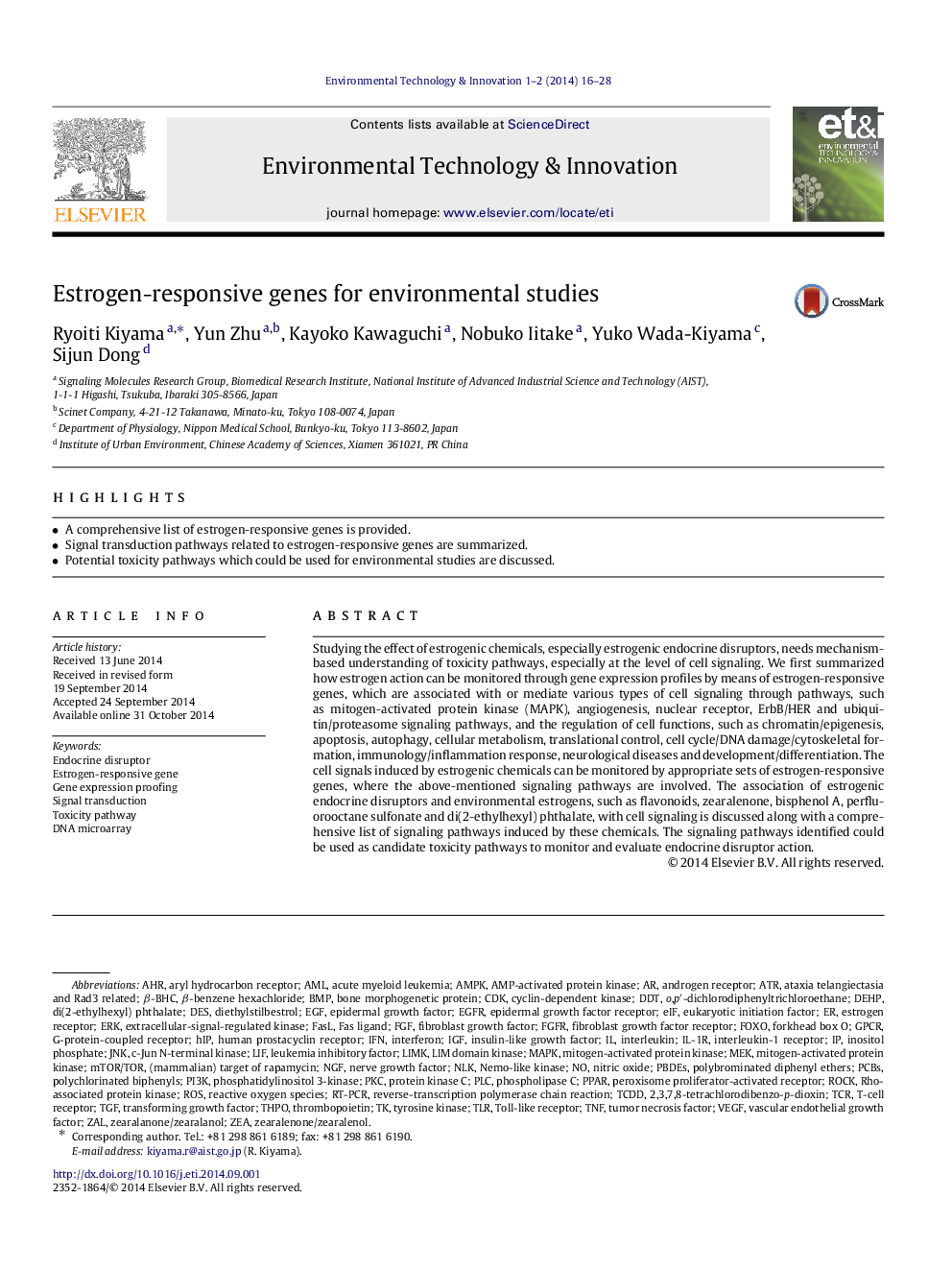| کد مقاله | کد نشریه | سال انتشار | مقاله انگلیسی | نسخه تمام متن |
|---|---|---|---|---|
| 4428185 | 1619286 | 2014 | 13 صفحه PDF | دانلود رایگان |
• A comprehensive list of estrogen-responsive genes is provided.
• Signal transduction pathways related to estrogen-responsive genes are summarized.
• Potential toxicity pathways which could be used for environmental studies are discussed.
Studying the effect of estrogenic chemicals, especially estrogenic endocrine disruptors, needs mechanism-based understanding of toxicity pathways, especially at the level of cell signaling. We first summarized how estrogen action can be monitored through gene expression profiles by means of estrogen-responsive genes, which are associated with or mediate various types of cell signaling through pathways, such as mitogen-activated protein kinase (MAPK), angiogenesis, nuclear receptor, ErbB/HER and ubiquitin/proteasome signaling pathways, and the regulation of cell functions, such as chromatin/epigenesis, apoptosis, autophagy, cellular metabolism, translational control, cell cycle/DNA damage/cytoskeletal formation, immunology/inflammation response, neurological diseases and development/differentiation. The cell signals induced by estrogenic chemicals can be monitored by appropriate sets of estrogen-responsive genes, where the above-mentioned signaling pathways are involved. The association of estrogenic endocrine disruptors and environmental estrogens, such as flavonoids, zearalenone, bisphenol A, perfluorooctane sulfonate and di(2-ethylhexyl) phthalate, with cell signaling is discussed along with a comprehensive list of signaling pathways induced by these chemicals. The signaling pathways identified could be used as candidate toxicity pathways to monitor and evaluate endocrine disruptor action.
Journal: Environmental Technology & Innovation - Volumes 1–2, June–December 2014, Pages 16–28
